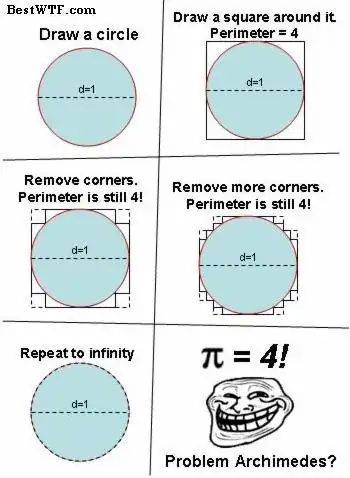Consider three geometric transformations.
1st: The geometric "proof" that hypotenuse of a right triangle is equal to the sum of squares of the other sides. The link is here.
2nd: The famous "pi=4" "proof" by geometric transformation

3rd: Archimedes's method of calculation of pi

What is inherently different in these transformations that 1st 2nd yield wrong results while the 3rd doesn't? Is there any heuristic which could hint us when the transformation is valid for calculation of the limit? I have read the discussion on mathstackexchange about pi=4, but still I couldn't get that intuition. There was an interesting argument about the divergence of the derivatives of those two curves. But I still don't understand if it is a satisfactory condition to prove that Archimedes construction was a valid one.
If possible, please give 2 two explanations from intuitional and strictly mathematical point of view.